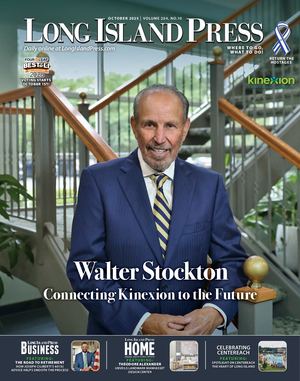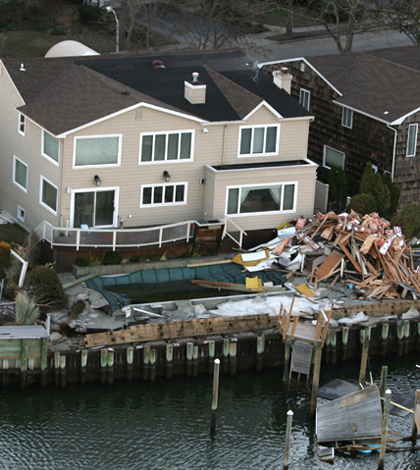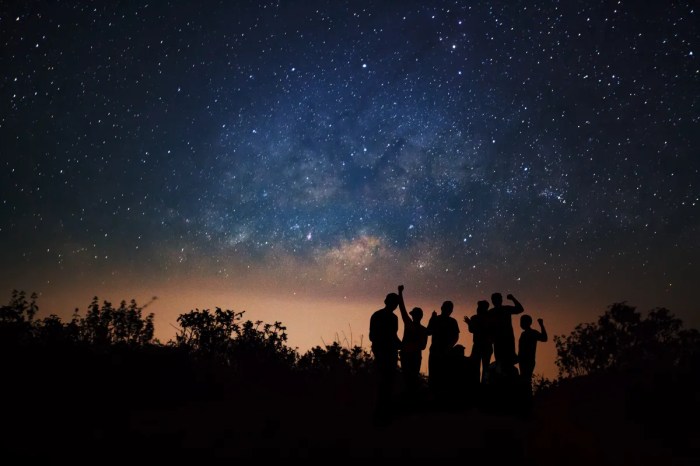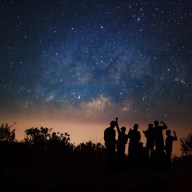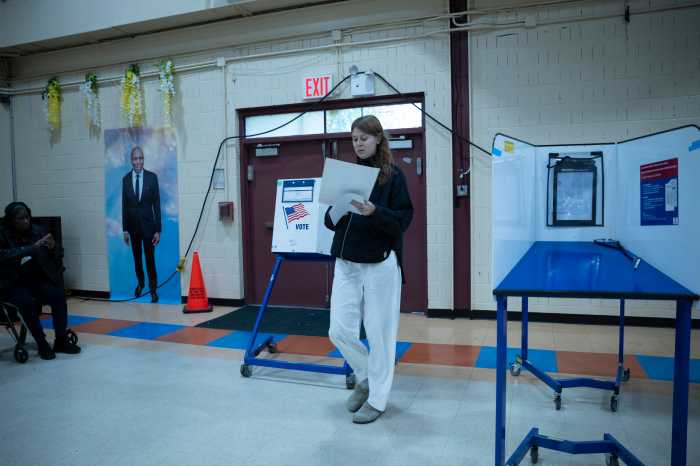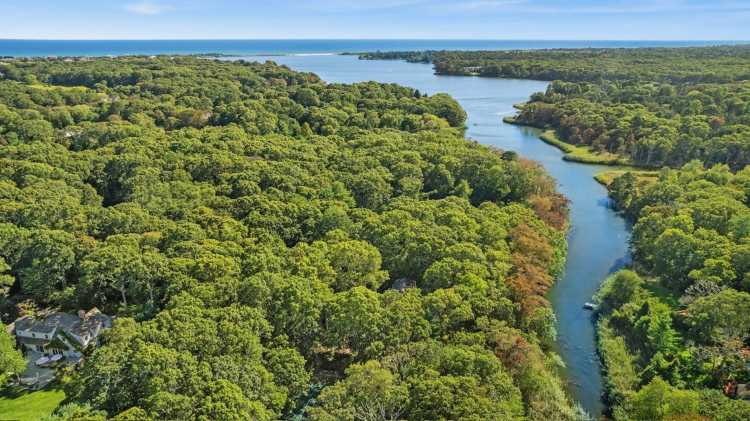
Before the historic Long Island Express hurricane rolled ashore in Bellport 75 years ago September 21, one junior government meteorologist accurately predicted its path, but was overruled by his superiors, who thought it would go out to sea.
“Cloudy skies and gusty conditions” were in LI’s forecast for that fateful Wednesday afternoon when the last category 3-strength tropical cyclone surprised end-of-summer revelers with deadly 121 mph winds fueling floodwaters that reached a mile inland, according to a West Hampton Beach Historical Society exhibit on the 1938 hurricane running through October 26. The storm left 60 dead on the Island and more than 700 beyond our shores.
“On the basis of the data on hand [forecasters] could hardly have given any greater advance warning, for the tropical storm—the worst in the history of the Northeast—was a freak,” said Dr. Charles Clark, then-acting chief of the federal Weather Bureau, which relied on reports from ships at sea in those pre-radar days. “It did not follow the usual pattern.”
The storm is now considered the region’s 100-year storm, the high-water mark for Northeast hurricanes. But consensus remains elusive on Superstorm Sandy—an 80-mph-windspeed post-tropical cyclone-Nor’easter hybrid dubbed Frankenstorm before it made landfall near Atlantic City Oct. 29—and whether it was the so-called storm of the century LI has been awaiting since ‘38. For as bad as Sandy was, it was not a category 3, although the storm surge reached category 2 levels in some areas, the U.S. Geological Survey has found.
Hurricane Katrina, a category 3 that outranks Sandy as the nation’s costliest, packed 125 mph winds when it leveled New Orleans’ levies in 2005—easily making it the storm of the century for the Gulf of Mexico. But Tropical Storm Irene—a blip on the radar of LI’s storm-scarred shores—caused 500-year floods in upstate New York and parts of New England two years ago.
“We have storms of the century every two years now,” Gov. Andrew Cuomo famously declared in a post-Sandy press conference, blaming global warming while calling the increased frequency of such catastrophic natural disasters “the new normal.”
While the majority of scientists agree that climate change fuels stronger and more frequent hurricanes, predicting them is harder than ever. The concept of a 100-year storm often gets taken literally, but is actually a statistical tool meteorologists, climatologists and hydrologists use to measure the 1-in-100 annual likelihood of an intense storm or flood hitting a given area. Climate change has caused the tool’s usefulness to be questioned by some, but many agree that expecting yearly 100-year storms for New York is an exaggeration.
Alan Robock, a climatologist, professor at Rutgers University in New Jersey and a lead author of last month’s fifth report from the Intergovernmental Panel on Climate Change—which found, among other things, it’s “extremely likely” humans caused global warming—says that the term “storm of the century” can be misleading.
“Hurricanes are basically random,” he says. “The weather variability cause the storms in different places at different times of the hurricane season every year… So you can’t say which year is going to have big storms, but you can say over the next several decades there will be strong storms hitting us that on the average are stronger than the storms in the last several decades.”
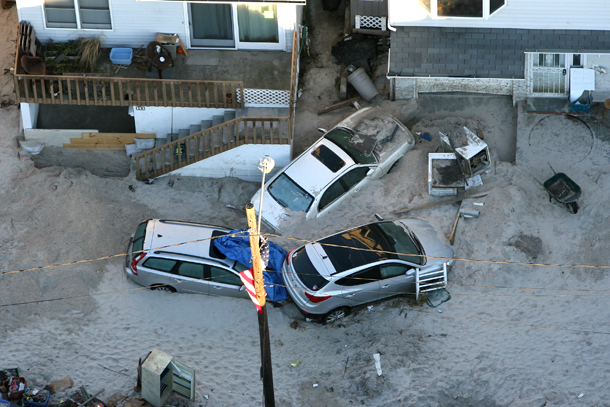
Two of Robock’s colleagues at Rutgers say Sandy was a storm of the century, anecdotally speaking.
“Storm of the century is not really a scientific term, per say,” says Steve Decker, a professor of meteorology at Rutgers. “You can rank these terms in many different ways. But if you rank them based on damage, [Sandy’s] one of the most costly storms we’ve had.”
Kenneth Miller, a geology professor at Rutgers, says Sandy earned the term based on flooding, especially considering it hit during a blue moon when the tides were astronomically higher and the fact the LI and New Jersey form a right angle—making it a catch basin prime for overflowing water piled up during hurricanes, especially one like Sandy that made a rare left turn into New York.
“We don’t have enough data to actually say firmly what the recurrence interval of a storm with the flooding power of Sandy is,” he says. “Yes, it was a category 1, but basically with the extent of the flood at astronomical high tide and the trajectory it took, which was the worst trajectory it could possibly have taken in perspective of flooding in New York, it’s not just the intensity of the storm, it’s when it hits, the tidal cycle and what it’s geometry is relative to.”
Experts at the National Hurricane Center (NHS) are less inclined to apply the term to Sandy.
“Was it the storm of the century? No,” says James Brinkley, storm surge operations manager at the NHS. “It’s obviously a storm that will be long remembered. But, we’re going to continue to still see lots of storms, each of them having their own characteristics… A category 3 is never a good thing, but there are so many different variables.”
Although the assertion by Cuomo that 100-year storms are happening annually is considered an oversimplification by most interviewed for this story, his point is well taken.
“Things we used to see only once in a lifetime are happening more often,” says Scott Mandia, a professor of science at Suffolk County Community College, noting a recent study that found Sandy-scale weather events should be expected every 20 years.
Still, he cautions that predicting the weather is far from a perfect science, regardless of how many satellites or storm-tracking computer models are deployed.
“No matter how much you think you know about this, Mother Nature keeps throwing us these curve balls,” he says of Sandy. “I’ve been predicting something like this for years, and even I was surprised.”
And with the increase in coastal populations amid at a time when sea levels are projected to rise about two feet in the coming century, the human toll will unquestionably skyrocket when future storms strike.
Fortunately, forecasters have advanced beyond the days of ignoring guys like Charles Pierce, the meteorologist who predicted that the ‘38 storm would hit the Northeast.
As for Sandy’s place in history, “Storm of the Century” or not, it’s surely one Long Islanders who lost their homes and businesses would just as soon rather forget.
